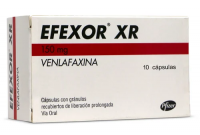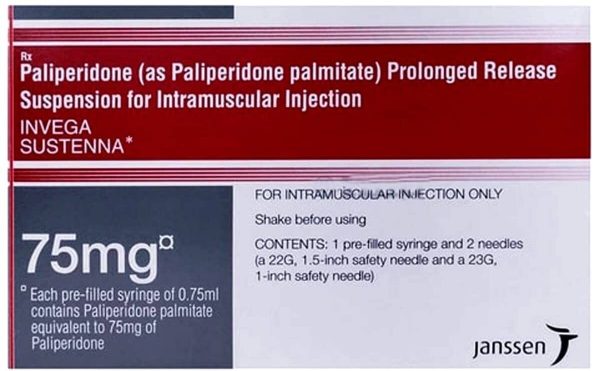Drinking water has many benefits for human body health. However, it is crucial to avoid dehydration which can cause many complications for our body. Yet, the fact about the problem with drinking water exists as well. What are they? So, let’s check the explanation below to find the details!
Strong Relation of Water and Health
Cholera, dysentery, typhoid, polio, hepatitis A, and other water-borne diseases can spread through unsanitary conditions and contaminated water sources. People put themselves at risk of avoidable health problems when water and sanitation facilities are either not available, are inadequate, or are poorly managed.
Lack of access to clean water, proper sanitation, and hygiene services increases the risk of infection and disease for everyone at a healthcare facility. However, it includes the patients and the employees.
According to the Centers for Disease Control and Prevention, limits for chemicals and microorganisms in water are established by the United States Environmental Protection Agency (EPA). It also oversees the quality of drinking water in public water systems.
But occasionally, public water supplies are contaminated with dangerous quantities of infectious bacteria and pollutants. Both the water’s initial source (such as groundwater or water from lakes or rivers) and its subsequent journey via the distribution system might introduce contaminants and pollutants.
Somehow, a problem with drinking water happens even after the water treatment plant has eliminated them.
Diseases Result in a Problem with Drinking Water
Hepatitis A, typhoid, polio, diarrhea, dysentery, and cholera are among the diseases with a problem with drinking water and inadequate sanitation. When inadequate, poorly run, or nonexistent water and sanitation facilities, people are at unnecessary risk for health problems.
This is especially true in healthcare settings where poor access to water, sanitation, and hygiene services puts both patients and employees at risk of infection and illness.
Seven patients in high-income countries (HICs) and fifteen patients in low- and middle-income countries (LMICs) will get at least one infection related to medical care. This happens during their hospital stay out of every 100 patients in acute-care hospitals.
The unsafe contamination or chemical pollution of hundreds of millions of people’s drinking water is caused by improper handling of wastewater from urban, industrial, and agricultural sources. Arsenic and fluoride, which are naturally occurring in groundwater, can also have health implications.
Lead, on the other hand, may be present in higher concentrations in drinking water. It is due to leaching from water supply components that come into contact with the water.
Factors Emphasizing Problem with Drinking Water
Water can occasionally have an off-putting aroma, flavor, or look. Both the temporary nature and lack of potential danger to public health are hallmarks of these purely aesthetic traits. Nevertheless, there may be a public health issue if your tap water suddenly changes color, flavor, or smell.
You absolutely should not consume water that is offensive in appearance, smell, or taste. State law to address aesthetic water quality issues obligates public water systems with new sources.
Besides, it can also be with customers who request and are willing to pay for treatment. Therefore below are the typical common causes of a problem with drinking water.
1. Color
The first typical common cause of a problem with drinking water is its color. If the color of water changes like the typical below, it means the water can be dangerous to consume. Here is the detail:
a. Blue or Green
This discoloration of the water could be due to the corrosion of copper pipes. The presence of a bluish-green stain on porcelain fixtures resulting from dripping water indicates the presence of corrosion.
Corrosion can introduce potentially harmful metals like lead and copper into drinking water. Besides, there can be issues with the home’s pipes if the water is too acidic.
b. Dark Brown or Black
The color of the water becomes dark brown or black may be a sign of a problem with drinking water. In this case, the most typical reason for this issue with the watercolor of dark brown or black is manganese in the water or silt in the pipes.
c. Yellow, Orange, Red, or Brown
The most prevalent cause of this issue with watercolors is iron rust. Rusty water can be a result of the water main or pipes made of steel, cast iron, or galvanized iron in a house or business. Although iron in drinking water is unpleasant and may corrode clothing and fixtures, it poses no health risk to humans.
s. Cloudy Water or Milky White
This color issue is usually caused by small air bubbles. Pour some water into a transparent glass and place it on the counter if your water is white. The murky or milky look gets stuck in the air if the water in the glass begins to clear at the bottom first.
However, the situation should clear up in a few minutes and pose no health risks. If this problem is specific to your well, it could be related to the pumping mechanism.
2. Flavor and Odor
The next sign of the existence of problems with drinking water is its flavor and odor. Below are the specific explanations.
a. Chemical, Chlorine, or Pharmaceutical Tastes or Smells
Strong tastes or odors can be caused by adding chlorine to the water or by the reaction of chlorine with an accumulation of organic matter in your plumbing system. Usually, there is no acute health risk from this.
b. The Odor of Rotten Eggs or Sulfur
One of the problems with drinking water is its odor like rotten eggs or sulfur. Odors might be a result of bacteria that are growing in your water heater or sink drain. This stench could also be due to naturally occurring hydrogen sulfide in your water source.
Place a tiny amount of water in a narrow glass, go away from the sink, swirl the water inside the glass, and inhale the scent to determine the cause. Bacteria in the sink drain is most likely the cause of the issue if the water has no smell.
However, should there be an odor in the water, it tubes originally from your water heater. Your water heater has a component that keeps it from corroding. As the element ages, it occasionally releases a sulfurous odor. This issue might be assessed by a certified plumber.
Recognize The Problem with Drinking Water and Find the Solution!
The problem with drinking water can cause serious diseases in our bodies. However, the risks to take are not a joke. Moreover, if its problem has a strong relationship with chemical contamination. It can cause not only diseases but also death. Therefore, let’s learn more about it and find a way to avoid it or find a solution if it ever happens!
Bagikan










